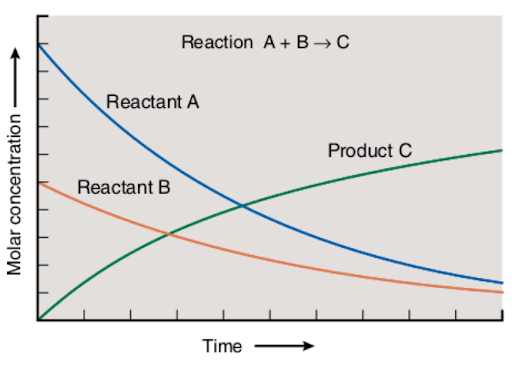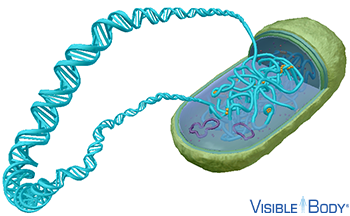AshvinP wrote: ↑Sat Sep 02, 2023 3:53 pmFederica wrote: ↑Sat Sep 02, 2023 2:57 pm Ok, Cleric, Ashvin,
Thanks for your replies above. I will not say all that I would like to say, otherwise the most crucial thing I want to say will inevitably be snowed under the mass of text (Ashvin, yes, this is also what happened on the transhumanist topic, and it's the sole reason for the unaddressed Steiner quotes).
So, I want to make one single point for now. The following is a question that, to me, exemplifies 'using the concepts from the simulations as a way to probe the inner experience':
QUESTION: What kind of spiritual insights can be gained by observing attempts to ‘understand life’ that move from the bottom up, i.e. inductive, i.e. computational, through guessing a molecular or cellular geometry through analysis of databases, versus simulations that start from empirically determined geometry - i.e. measured/observed on natural or artificial molecules/cells - and then apply the laws of chemistry on top of that initial picture to predict the life dynamics of the entity? Is it in both cases the exact same mesmerization by scientific superstition that ignores the etheric nature of life, trying to understand it as configuration of material dynamics only, or not?
I have a sense that it is not so, but to make it short I am currently struggling to articulate that. So, I would think that asking questions like this one would be one possible proper way not to remain ignorant and fearful and avoidant (needless to say it's never been my attitude), while also offering that necessary resistance to Ahrimanic momentum (I picked the word from Steiner, but we can use another one).
Federica,
I agree that the question as you stated above, assuming of course we are interested in exploring the answers with an open mind, is a great way to engage the topic in a spiritually healthy way. I know that Cleric will offer a much more helpful and detailed answer to that question so I will keep my observation very general and brief.
By observing these patterns of thinking-feeling and trying to imitate the thinking gestures, so to speak, and observing the results, we are seeking to resonate with the underlying intentions that structure our epoch, both the spirits of progress and those of hindrances. At the same time, because our own individual soul-structure (higher and lower) is a microcosmic image of all the patterns of thinking-feeling-will that are embedded in the forms and activities of culture and nature, we are learning more about the depth structure of our be-ing and maturing spiritually in that way. In other words, we are not gaining insights through the materialistic conclusions of the research i.e. life is just an epiphenomenal manifestation of mindless and mechanically interacting particles, but through the way in which the research is carried out and the results that manifest from it. The scientists cannot help but stumble on valuable insights embedded in the results because, whether they know it or not (and usually not), their thinking activity is a lawful continuation of Cosmic spiritual activity and is therefore probing the very meaningful contours of reality. In that sense, when we approach the results with living thinking that doesn’t forget its own activity, we are mining insights from the results that could not possibly be mined when spiritual activity remains in the blind spot.
Ashvin,
I understand your comment as a premise to the question. The expectation is to gain insights from "descending" in thinking patterns similar to those that allow for the conception and execution of such projects (to the extent that it is possible at any given state of conventional understanding of the details) and clearly not from the research results taken at face value. This is the point of departure, but thanks for making it extra clear and properly articulated.
Ashvin wrote:Correspondingly, it seems to me that a question of the sort that you asked, Ashvin, which is: “How fascinating, so does it make sense that we will then be able to 3D-print liver cells to heal the poor at low costs?” goes into a slightly different direction compared to the question above. A direction that leans towards what Steiner calls “illusions of a mathematical nature about the universe", that are especially illusory "when we transpose them into our daily environment” as per the quote in my post just above, more than towards relating the simulation to our "deepened and delaminated experience".
I never asked that question, but I can see how you may have misconstrued it in that way. In that post, I was pointing to how things could go in one or two directions, or most likely in both.
1) The etheric forces remain unconscious and therefore the capacity for regeneration and healing remains concentrated in a small segment of the population with material resources because it is mediated through the mineral-technological element and people are generally unaware of this mediation.
2) The etheric forces are brought into consciousness by inner attunement and harmonization of the full-depth spectrum, i.e. inner moral transformation and elevation of cognition, and then individuals can find creative pathways to regenerating their own diseased organism, or helping others at minimal to no cost, without mediation by the mineral-technological element that requires the concentration of material resources. Practically, we are speaking of prayer, meditation, and all sorts of creative and moral ways of interacting with our environment and fellow beings. Most of these ways of interacting are completely unsuspected for the average person who is ignorant of the spiritual influences that surround us (including me). Eventually, this interaction will also take on a more artistic and scientific character and it already has to some extent, for ex. the Anthroposophical work in the medical field, such as Are Thoresen’s work with the elemental beings or healing via Eurhythmy, or Rolfing, etc. Just like with any science, we should expect these things to become more integrated and systematic and effective over time, and for new creative developments in the healing sciences that we can scarcely imagine now.
What a fantastic overview! Indeed, this is not at all what I gathered from that post. I haven't re-read it now, but sorry if I didn't get the intended meaning out of it. One question: if that's the extent of the misunderstanding, why have you waited until the third or fourth mention of that post before clarifying?





